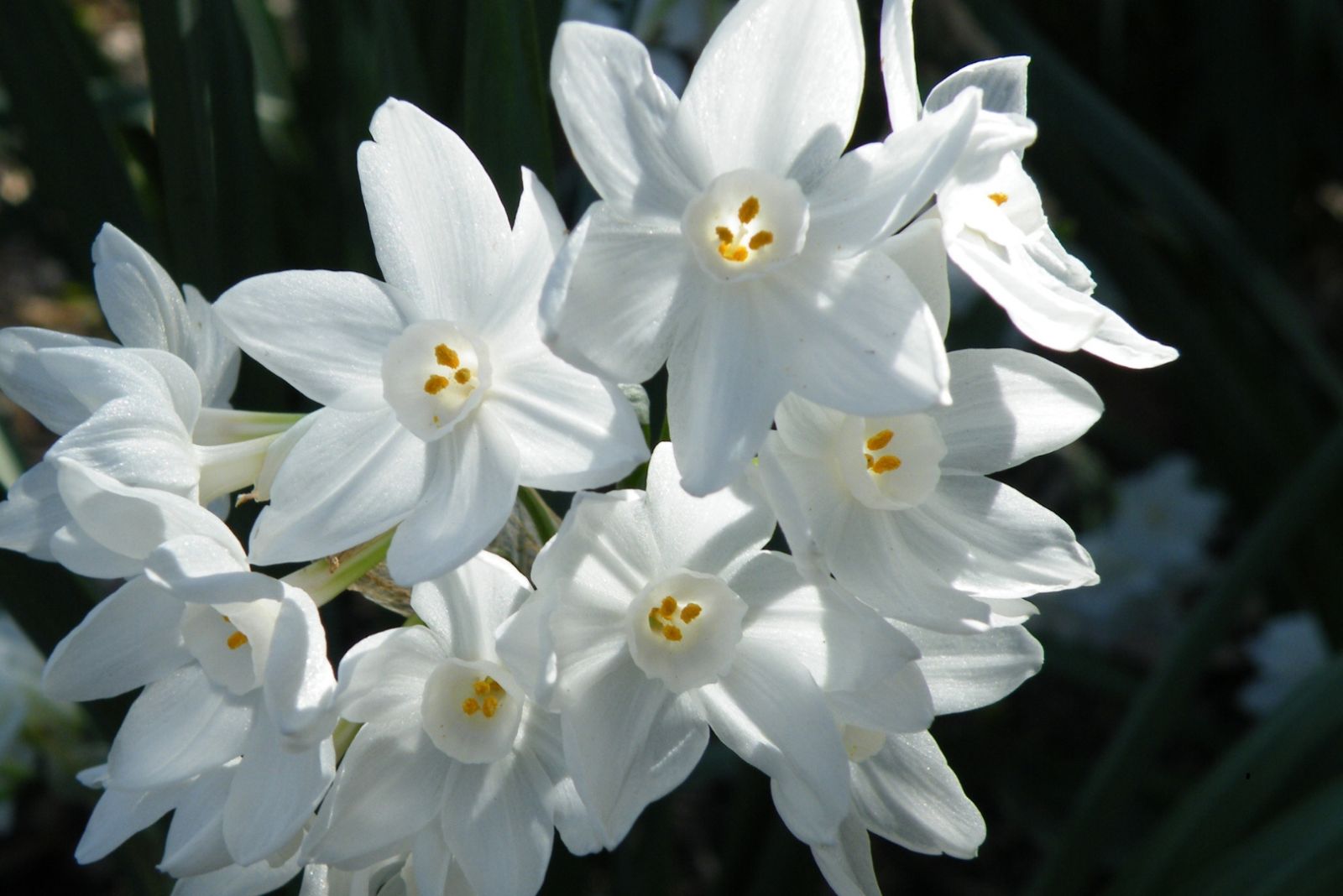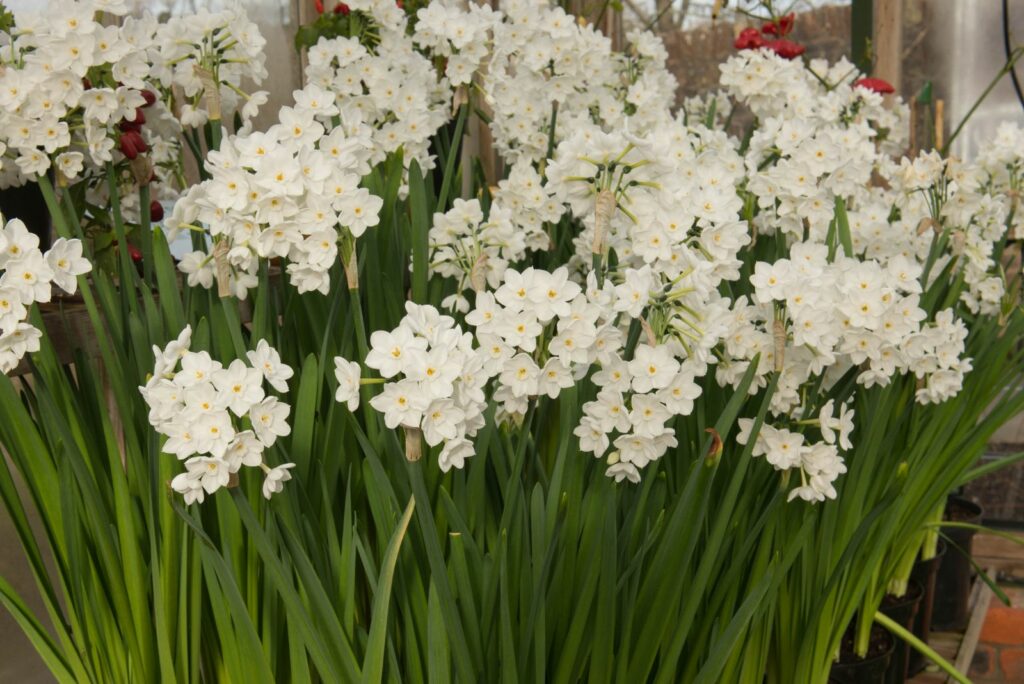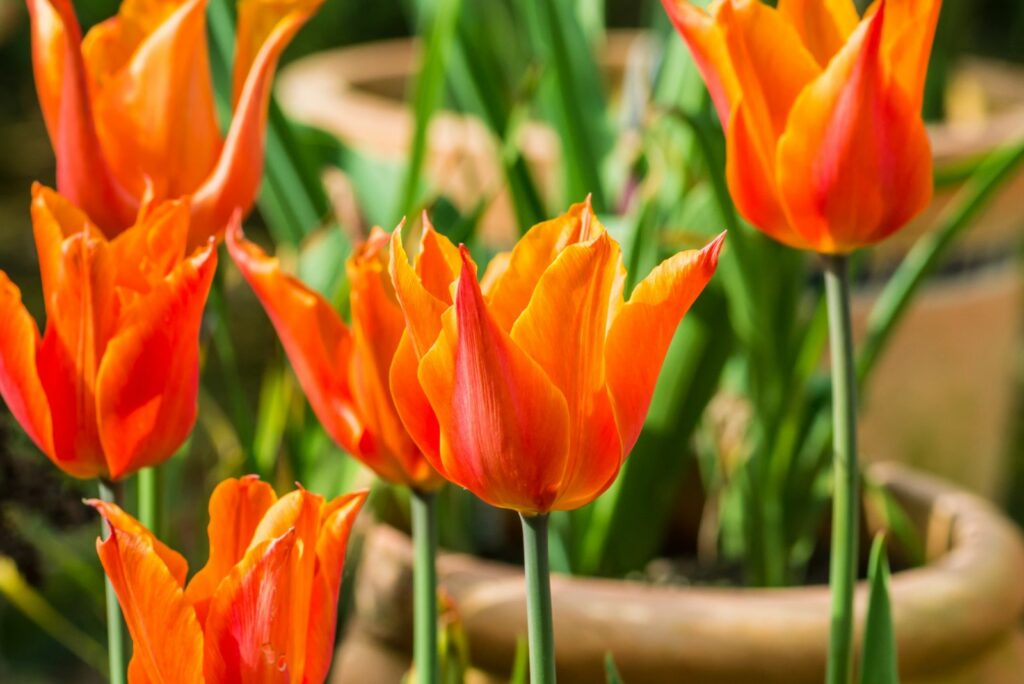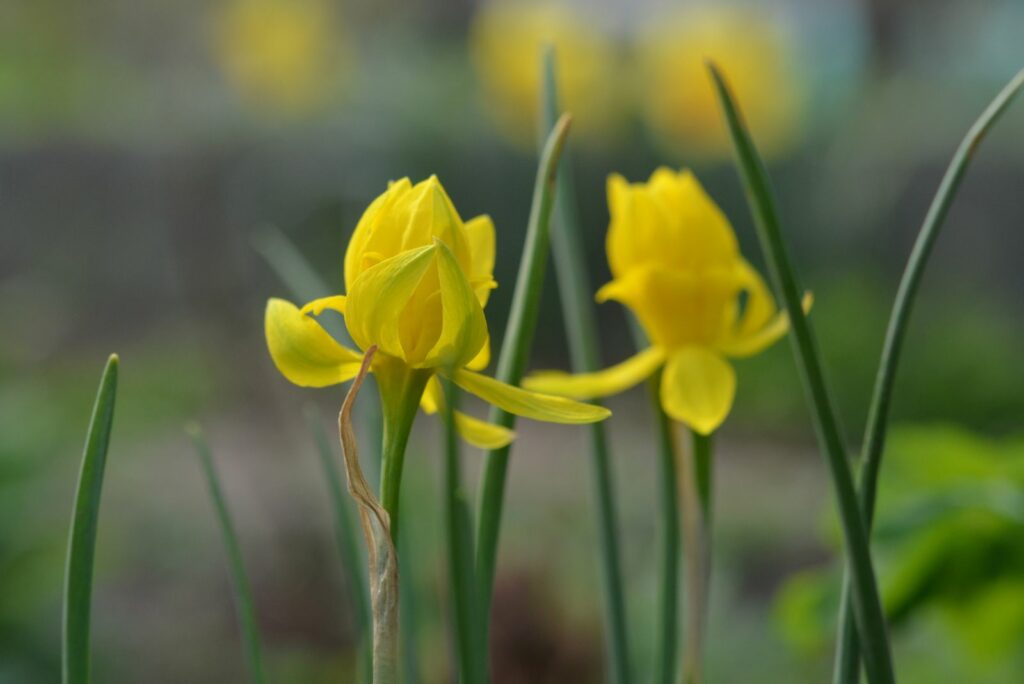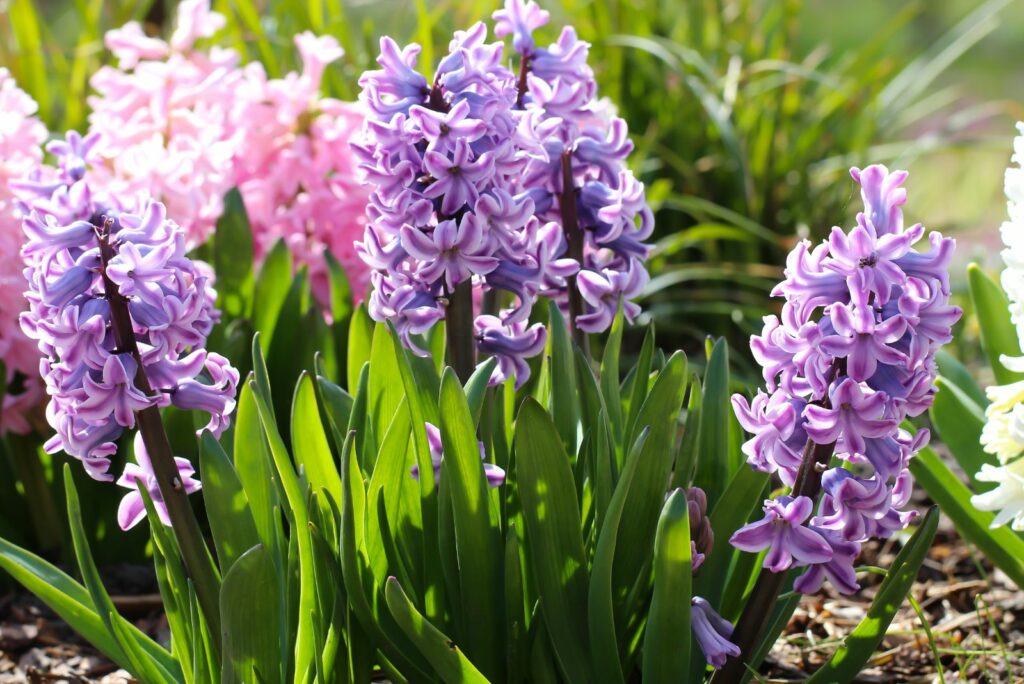It’s not time to throw in the trowel just because it’s fall! If you’ve got a soft spot for fragrant bulbs, now’s the time to plant them and make your garden the envy of the neighborhood.
Bulbs usually get their time to shine in spring, but some are tough enough to brave the cold and bloom when others won’t.
Will you hop on board and turn your garden into a showstopper? Roll up your sleeves, grab your shovel, and let’s get to work!
1. Narcissus Pipit For A Unique Touch
Seeing a Narcissus plant on this list may not surprise you. But I have something special for you today.
An unusual yet lovely scented variety Pipit is all your garden needs this season! What’s special about this Narcissus is that it produces blossoms renowned for their color graduation.
The outer petals come in lemon yellow and it gradually brightens until it’s completely white in the center of the blossoms.
If you don’t have a lot of space in your garden, worry not, because the Pipit performs well in containers! It won’t exceed 12 inches so there’s no risk of falling over!
These Narcissus varieties thrive in USDA hardiness zones 3 through 9 and display blooms from mid to late spring. You can spice things up by combining them with hyacinths for more spring flowers!
2. Holidays Aren’t The Same Without Paperwhites
I don’t know about you but my Christmas table can’t go without paperwhites. These spectacular scented bloomers are a trademark of the winter season!
Interestingly, you can plant them at different times, depending on when you want them to bloom.
For instance, if you prefer blooms for Thanksgiving, then planting paperwhites in early October is your best bet.
If you want paperwhites to bloom during Christmas, mid or late November is the ideal planting time. For New Year flowers, don’t wait longer than early December.
Some gardeners claim that paperwhites can come back next year, but from my experience, it’s best to grow them as annuals.
They aren’t really cold-hardy and won’t survive harsh conditions found in zone 8 and lower.
If you don’t live in Texas or Arizona, the only way to make these plants perennials is to keep them under glass.
3. Tulip Ballerina Screams Elegance
Late spring garden without tulips? No, thank you. The color scheme and scent of tulips make them the favorite of gardeners all around the world.
If you already have a few of the standard varieties and want to try something new, then Ballerina is exactly what you need.
It features slim and elegant orange blossoms with pointy tips. It’s best suited for hardiness zones 3 through 8 and planting it in fall ensures the best results.
Make sure to plant your Ballerina in a well-lit spot because the blossoms require a lot of full sun to open.
If you’re thinking of container planting, I don’t really recommend it because Ballerina tulips can grow up to 24 inches.
4. Cheer Up Your Garden With Narcissus Campernelle Double
Now it’s time for good old daffodils. The Campernelle Double variety is highly scented and it’s impossible not to notice it when you walk through your garden.
They’re hardy in zones 6 through 8 and need a bright to partially shaded spot to thrive.
If you live in the northern regions, then go for a spot with a lot of full sun. On the other hand, if you live in warmer climates, then a location with light shade works better.
Campernelle Double won’t exceed 15 inches so you can pot it up.
Be extra careful when planting this bulb and opt for deeper holes (6-8 inches). Shallow-planted bulbs can’t make it through winter!
5. Hyacinths For A Dazzling Spring Show
And the last fragrant bulbs on our list are the popular hyacinths. All varieties have a wonderful scent and they’re hardy down to USDA zone 4.
Maroon, peach, white, and lilac blossoms are true showstoppers and inevitable parts of spring gardens.
I’m pretty fond of rich colors and that’s why the Purple Sensation variety has been a part of my garden for years.
When compared to other common spring bulbs, hyacinth bulbs are larger so they’ll need a very deep hole. I typically aim for a hole that’s three times deeper than the bulb itself.
Pay close attention to drainage because hyacinths are very sensitive to waterlogging. If your outdoor flower beds are too wet, I recommend growing your hyacinths in containers.
That’s all folks! If fragrant bulbs are on your mind, you’ve got the inside scoop now. Just follow our tips and watch your garden bloom in all its glory!!

